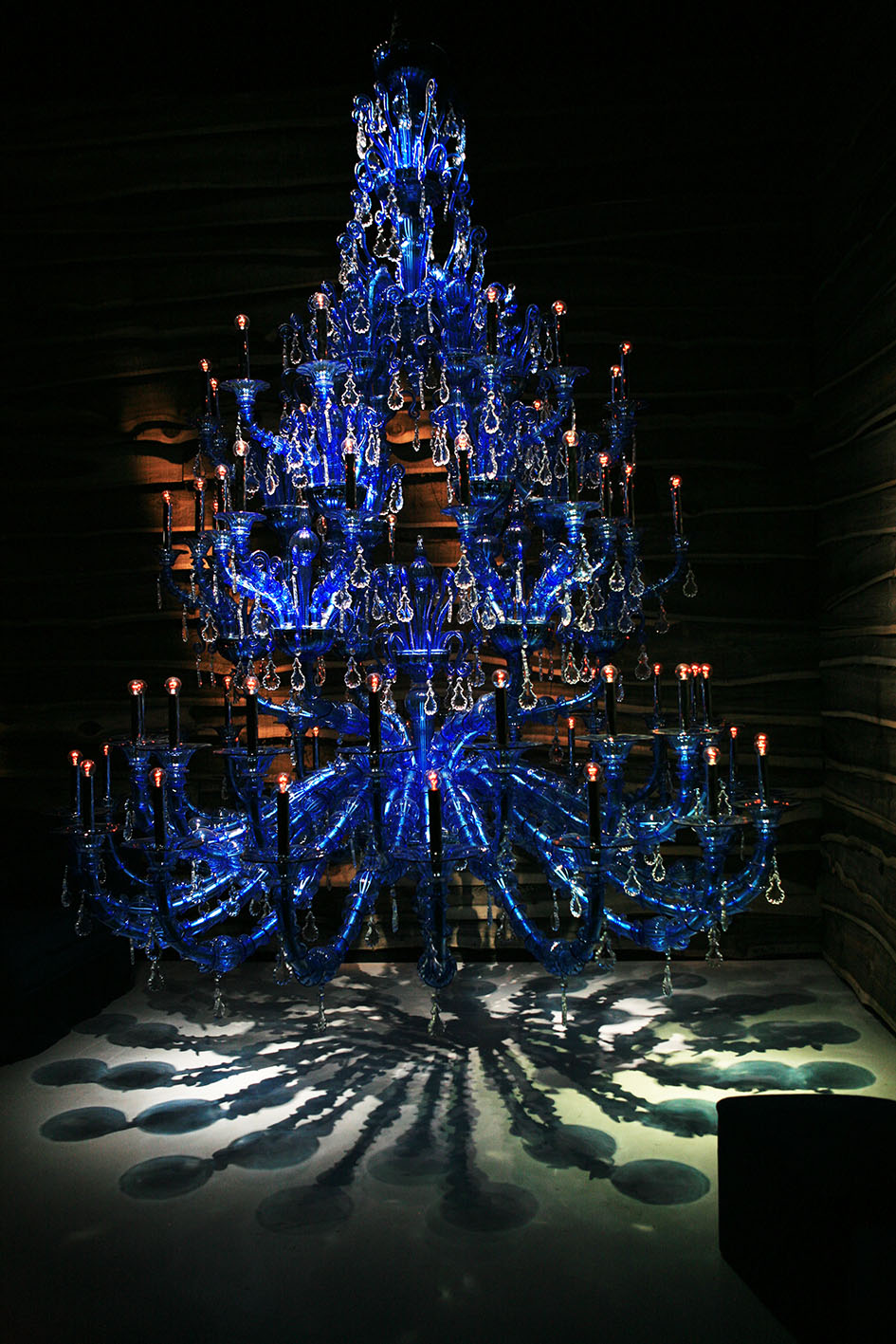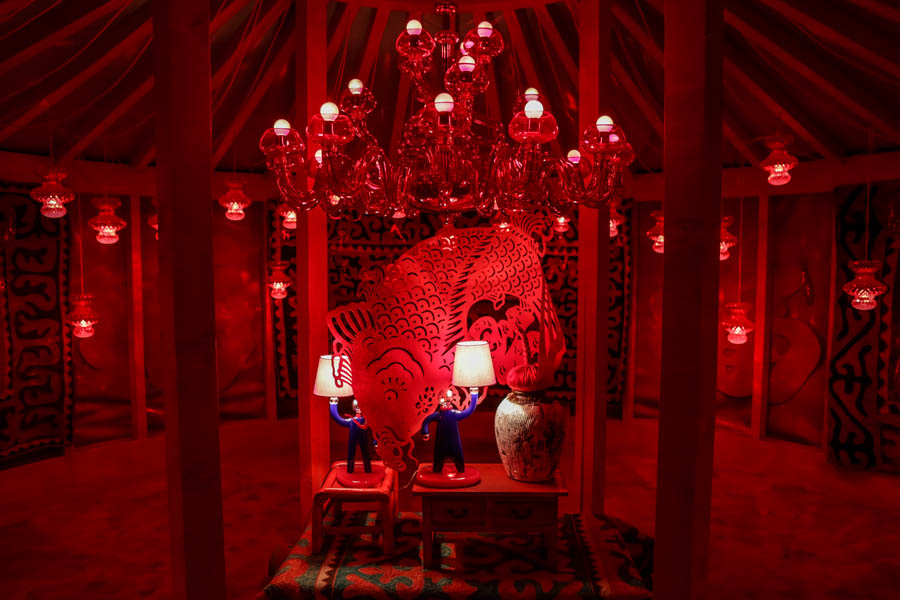Eclectic, curious, visionary, practical, generous, open mind, never banal, feminine in the best sense of the word. She loves the colors of the South of the world, travels, traditions as well as innovative and unexpected solutions. A 360° experience in the world of design, crowned by international successes and awards. Paola Navone is a "unicum" and a fountain of conversation. For her, ever since she was a child, design has always been "like an omelet: with mushrooms or zucchini, as long as it is good".
2000-2020, in these 20 years what has changed? And what will change in the last year that will take us to 2020?
I just think it’s changed that hopefully, there’s more freedom.
It’s already a good answer.
It’s not like you can analyze the changes, the real change now is that everything coexists and everything can live more and more. What will change? It will change that this degree of freedom will grow.
Do you think that this freedom is also expressed by the fact that design has gone to intercept a thousand other products, a thousand other needs, a thousand other expressions?
Let’s say that there is more freedom on the part of those who consume design, which is much less oblative than before, so it’s like in clothing...
Eclectic, curious, visionary, practical, generous, open mind, never banal, feminine in the best sense of the word. She loves the colors of the South of the world, travels, traditions as well as innovative and unexpected solutions. A 360° experience in the world of design, crowned by international successes and awards. Paola Navone is a "unicum" and a fountain of conversation. For her, ever since she was a child, design has always been "like an omelet: with mushrooms or zucchini, as long as it is good".
2000-2020, in these 20 years what has changed? And what will change in the last year that will take us to 2020?
I just think it’s changed that hopefully, there’s more freedom.
It’s already a good answer.
It’s not like you can analyze the changes, the real change now is that everything coexists and everything can live more and more. What will change? It will change that this degree of freedom will grow.
Do you think that this freedom is also expressed by the fact that design has gone to intercept a thousand other products, a thousand other needs, a thousand other expressions?
Let’s say that there is more freedom on the part of those who consume design, which is much less oblative than before, so it’s like in clothing, one is quieter not to ask the problem of what is the collection of the next six months, put together what you want, and this same type of evolution there has been in furniture, there is no longer this kind of subservience to the architect or the decorateur. In this context I say people are freer. And then, in my opinion, even the designers are freer now that they splash a bit in all directions. The view is freer because it is open to creativity that once were considered non-existent or marginal, then Asia, Africa rather than the north of Europe, in other word this monopoly, a little bit has broken.
Is it dangerous for us this story, this opening?
It is dangerous yes or no, in the sense that if it excites curiosity, the idea of scouting, the adventure not. If it produces defensive attitudes, clearly it’s the end.
You have done everything in an eclectic way, in a free way, but what is the fil-rouge of your work if you had to define it?
Curiosity, and always want to look at the next day, never at what is over. Projects to which I am most attached are those that are not finished, because as soon as they end for me a sort of period, an adventure, a journey closes.
But could there be a goal, an idea, an object, a realization? Is there ever an end to curiosity?
There is never an end in the sense that it is really a sort of treasure hunt with this treasure that is eventually somewhere.
With what adjectives and how would you define contemporary design, the most present design, today design?
I have difficulty in using an adjective, because as I said, I have the idea that there are more and more different aspects and strands of design, with percentages of interest in many of these. Eclectic, multifaceted, a sort of amoeba with many tentacles like a jellyfish.
About your experiences at Superstudio, which one do you remember with more pleasure?
The first, Barovier & Toso, in 2010
What gave you the idea of such a special installation?
I love to tell about companies because there is a bit of magic in these places where it's produced, only that the communication is always a bit dry, you always see these products. The magical, fairy-tale part of these energies is always lost. I am very passionate about this and when I have interlocutors I try to convey to the audience what is my fantasy when I go around these companies. Then I went to Murano, it was in the year when there was not Eurolight, we show the Barovier & Toso, we don’t show lamps, and then clearly the lamps were there and had to be in some way shown, so I went for this tour and I have to say that the thing that impressed me the most was the family tree, for 1700 years, a crazy number, 120 generations of them all . I recreated the family tree at the entrance and then with small pieces of glass and with two good French artists we made microscopic sculptures with glass and a light inside, all different. Everyone had their own microscopic sculpture, the exhibition opened in this way. And then I went down the path where I wanted to finally see these wonderful objects, each one was a story. Let’s relate them to these wonders. Normally you enter and the bigger a chandelier, the bigger you see it in a big place so unreachable. We took these gigantic things and we practically pulled them to the ground; there is the first living room where you sat on a sofa of wonderful blue leather and looked at, talked to this chandelier that was practically sitting next to you and you were at the height of this chair. All the materials of the preparation were so precious, the glass that I chose was blue. Blue is one of the colors I prefer and is more magical than the others, I used wood, wood went bad, rotten, dry or burnt and rusty iron so I took what I needed and I did of these few things here.
How important is the mise-en-scène in presenting today a product, a design idea?
Now it is a third, a third and a third; a third is the idea, a third is the product and a third is the communication. Once the communication had a lower percentage, now it actually has the value of the idea and has the value of the product. In another installation at Superstudio we had these rather classic chandeliers, so we invented some borderline uses so we made an African market, with these beautiful Afro women, in her head we put a chandelier for each, then we mixed a basket of materials.
What does a "trade" show have to be convincing?
From my point of view, if you have to tell about products, I like to tell companies through products but also through things in which you stumble when you go to a company. We as designers have a rule that says that we must always safeguard a small percentage of fun because we are lucky enough to have a job that gives more possibilities than others.
What is for you the Fuorisalone? What does it represent?
I think I started the Fuorisalone, when we made the first presentation of Mondo with Romeo Gigli, no one had ever done the Fuorisalone, that time the Fuorisalone was born. I think it’s a chance for anyone who looks around 360 degrees. Who goes around in those days can get in touch with information that he does not have daily, he doesn't look for them but he meets them. It is an extraordinary opportunity for meetings, in places that are not constrictive as a fair… It’s a lottery, and something will stick to your skin.
If you had to mention three design icons of the last twenty years?
Two I can’t.. two hundred! I'll make you a list...
What changed in your life working and living here? What gave you more or less?
Everyone knows where the address is...next to Superstudio!



